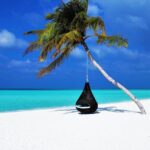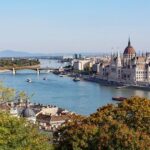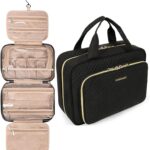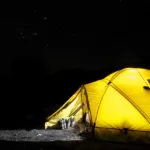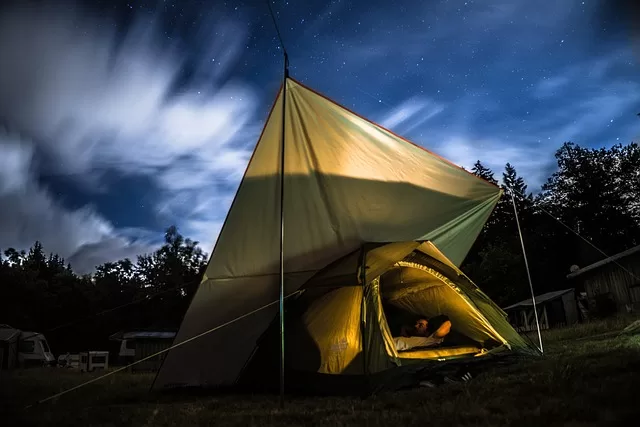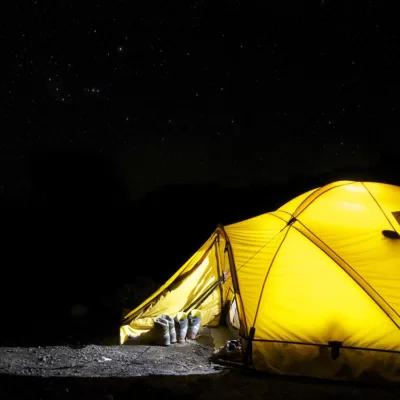As winter approaches, many outdoor enthusiasts might be tempted to store their camping gear and hibernate until spring. But why wait when you can experience the magical beauty of winter wonderland while cozying up in your tent or RV? Yeah, there are campsites suitable for winter camping and with the right preparation and equipment, you can have an unforgettable winter camping adventure that allows you to connect with nature in a unique way.
While there are many campsites for winter camping, here is a pointer to only the best campsites for winter camping you should consider. So, if you’re looking for the best campsites that offer both warmth and coziness during the cold season, you are sure to find what you are looking for here in the listed best campsites for winter camping across the country.
Factors to Consider When Choosing a Winter Campsite
Even though winter camping can be an incredibly rewarding and unique experience, allowing you to enjoy the beauty of nature in a whole new way, the weather comes with a whole host of new challenges. You must consider a whole of things when choosing a campsite. From location to climate to safety, there are a number of important factors to keep in mind to ensure you choose one of the best campsites for winter camping that would be both enjoyable and safe.
Location
Location is obviously super important when it comes to choosing a winter campsite. Do you want to be near skiing or snowboarding slopes? Or maybe you’re looking for a remote spot with breathtaking views? Keep in mind that some locations might be more prone to harsh winter weather than others, so it’s important to do your research before making a decision.
Accessibility
Accessibility is also key. Can you drive to the campsite, or will you need to hike or snowshoe in? If you’re driving; going on car camping or bicycle camping, make sure the roads are well-maintained and safe for winter travel. And if you’re hiking in, make sure you have the appropriate gear and knowledge to navigate the terrain.
Amenities
When it comes to amenities, think about what you’ll need to stay warm and comfortable during your stay. Are there heated restrooms or showers available? Is there a source of drinking water nearby? You might also want to look for campsites that offer electricity or other forms of heating, especially if you’re camping in an RV or camper. Campsites with these amenities make the best campsites for winter camping.
Climate
The climate of the campsite is another important factor to consider. Is it in a location with a lot of snowfall or freezing temperatures? When you have considered this, make sure to pack the right camping gear and equipment like the right camping clothing and apparel to stay warm and dry, also check the weather forecast before heading out.
Safety
Last but not least, safety should always be a top consideration when choosing a winter campsite. Are there any hazards to be aware of, such as avalanches or slippery ice patches? Make sure you’re prepared with tips for handling camping accidents and emergencies by bringing a first aid kit, extra food and water, and communication devices like a cell phone or two-way radio.
Best Campsites for Winter Camping
Winter camping can be an incredibly rewarding and unique experience, but choosing the right campsite is key to ensuring a safe and enjoyable trip. From beautiful national parks to remote wilderness areas, there are countless winter campsites across the country that offer stunning scenery and opportunities for outdoor adventure, and here are some of the best campsites for winter camping.
Yosemite National Park, California
Yosemite National Park is an amazing winter campsite that offers endless opportunities for outdoor adventure and stunning views. With the right preparation and gear, you can have an unforgettable winter camping experience in this iconic park. Yosemite National Park is one of the most iconic and beautiful destinations in the country, and it’s no less stunning in the winter months.
The park offers several campsites that are open year-round, including Upper Pines, Camp 4, and Wawona. Upper Pines is a particularly great option for winter camping, with its close proximity to the park’s main attractions and heated restrooms. Yosemite Valley is a popular spot for winter activities like skiing, snowshoeing, and ice skating, and there are plenty of guided tours and activities available for visitors.
If you’re planning to camp in Yosemite during the winter, make sure you come prepared with the right gear and clothing to stay warm and dry, as temperatures can drop below freezing at night. Also, keep in mind that snow and ice can impact road conditions in the park, so check the park’s website or call ahead to confirm the status of roads and facilities and get armed with useful tips for winter camping before you go.
Banff National Park, Alberta, Canada
Banff National Park is located in the stunning Canadian Rockies and offers some of the best winter camping experiences in North America. The park has several campgrounds that are open year-round, including Tunnel Mountain, Two Jack Main, and Lake Louise. Tunnel Mountain is a particularly great option for winter camping, with its proximity to Banff Townsite and heated washrooms.
In addition to camping, Banff National Park offers a wide range of winter activities, including skiing, snowboarding, ice skating, and snowshoeing. For a truly unique experience, you can even take a guided snowshoe tour to Johnston Canyon, where you’ll see stunning frozen waterfalls and rock formations. Come prepared with the right winter camping gear and be best behaved, armed with tips on how to deal with wildlife while camping in the area, such as elk and wolves, and always take necessary precautions to ensure your safety.
Rocky Mountain National Park, Colorado

Rocky Mountain National Park is a stunning destination for winter camping, located in the heart of the Colorado Rockies. The park has several campgrounds that are open year-round, including Moraine Park, Glacier Basin, and Timber Creek.
Moraine Park is a particularly great option for winter camping, with its stunning views of the surrounding mountains and heated restrooms. In addition to camping, Rocky Mountain National Park offers a wide range of winter activities, including skiing, snowshoeing, and sledding. For a truly unique experience, you can even take a guided snowshoe tour to Bear Lake, where you’ll see stunning frozen waterfalls and wildlife.
Make sure you come prepared with the right gear and clothing to stay warm and dry, as temperatures in the park can drop to well below freezing during the winter months. Additionally, be aware of the potential for avalanches in the backcountry, and make sure you have the necessary training and equipment before venturing out. It’s also important to note that some areas of the park may be inaccessible during the winter due to snow and ice, so be sure to check the park’s website or call ahead to confirm conditions before you go.
Acadia National Park, Maine
Acadia National Park is a stunning camping destination with some of the best campsites for winter camping, located on the coast of Maine. The park has two campgrounds that are open year-round, including Blackwoods and Seawall. Blackwoods is a particularly great option for winter camping, with its proximity to the park’s main attractions and heated restrooms.
In addition to camping, Acadia National Park offers a range of winter activities, such as snowshoeing, cross-country skiing, and ice fishing. There are other thrilling things to do while camping there. For example, you can also take in the park’s stunning winter landscapes, including snowy forests, frozen lakes, and stunning ocean views.
It’s important to come prepared with the right gear and clothing to stay warm and dry, as temperatures in the park can drop well below freezing during the winter months. Additionally, be aware of the potential for icy and snowy conditions on park roads and trails, and take necessary precautions for staying safe and comfortable while camping.
Mount Hood National Forest, Oregon
Mount Hood National Forest is a beautiful camping destination located with the best campsites for winter camping in Oregon’s Cascade Range. The forest has several campgrounds that are open year-round, including Trillium Lake, Clear Lake, and Tollgate. Trillium Lake is a particularly great option for winter camping, with its stunning views of Mount Hood and heated restrooms.
In addition to camping, Mount Hood National Forest offers a range of winter activities, such as skiing, snowshoeing, and snowmobiling. Visitors can also take in the beauty of the forest’s snowy landscapes, including frozen waterfalls and tranquil snow-covered forests. Temperatures in the forest can drop below freezing during the winter so come with the right camping gear and camping clothing and apparel that suits the weather. Additionally, be aware of the potential for avalanches and other hazards in the backcountry, and take necessary precautions to ensure your safety.
Tips for Staying Warm and Cozy During Winter Camping
Though usually a wonderful experience, winter camping can also be a chilly one. The key to staying warm and comfortable during your winter camping trip is to come prepared with the right gear and knowledge. Here are some tips to help you stay cozy during your winter camping adventure:
Layering Clothing
Layering is crucial when it comes to staying warm in cold temperatures. Start with a moisture-wicking base layer to keep sweat away from your skin. Add a middle layer for insulation, such as a fleece or down jacket, and finish with an outer layer to protect you from wind and water.
Proper Insulation
Your choice of a camping tent and shelter is your first line of defense against the cold. Look for a tent with a sturdy frame and a rainfly that covers the whole tent to protect you from wind and moisture. Choose a tent with proper insulation, such as a four-season tent, to keep you warm and dry.
Sleeping Bags and Pads
Your choice of camping sleeping bags and pads is essential for a successful camping experience. Choose a sleeping bag that’s rated for the temperatures you’ll be experiencing. Make sure your sleeping bag is the right size and shape for your body to maximize warmth. Use a sleeping pad to insulate yourself from the cold ground.
Heating Equipment
Use a portable heater or a wood stove to keep your tent warm. Make sure to keep heaters and stoves away from flammable materials and never leave them unattended. Use caution when using propane heaters, as they can release dangerous carbon monoxide.
Hot Drinks and Food
Warm drinks and the right camping foods suitable for the cold weather can help keep you warm from the inside out. Bring a thermos filled with hot chocolate or tea and cook warm meals such as soups, stews, and chili. Consider bringing hand warmers or heating pads to keep your extremities warm.
Safety Tips for Winter Camping
It doesn’t matter whether you are cruising in one of the best campsites for winter camping in the country, you need to know that though this adventure can be a beautiful and peaceful experience, it also comes with unique risks and challenges. To ensure a safe and enjoyable trip, it’s important to follow these safety tips:
Proper Clothing
Dress in warm, waterproof clothing that is layered to regulate your body temperature. Wear insulated boots, a hat, and gloves to protect your extremities. Bring extra clothing in case you get wet or need to change.
Adequate Shelter
Choose a sturdy tent with a rainfly to protect you from wind and moisture. Master the art of pitching a tent like a pro to make yourself a tent that can withstand any element. Make sure your tent is properly staked and anchored to withstand harsh weather conditions. Consider bringing a tarp or emergency shelter as a backup.
First Aid Kit
Bring a well-stocked camping first aid and emergency kit with essentials such as bandages, gauze, antiseptic, and pain relievers. Consider including items specific to winter camping, such as hand warmers and hot packs. Make sure you know how to use all the items in your first aid kit.
Always bring a map and compass for route navigation, and know how to use them. Consider bringing other camping navigation tools like a GPS device or a phone with GPS capabilities as a backup. Make sure to familiarize yourself with the area before you start your trip.
Emergency Contact Information
Leave a detailed trip plan with a friend or family member, including your route, expected time of arrival, and emergency contact information. Bring a phone or radio to call for help if needed. Make sure you know the location of the nearest emergency services and how to contact them.
Conclusion
Winter camping may not be for everyone, but for those who are up for the challenge, it can be one of the most adventurous and unforgettable experiences of your life. Some of the best campsites for winter camping are Yosemite National Park in California, Banff National Park in Alberta, Canada, Rocky Mountain National Park in Colorado, Acadia National Park in Maine, and Mount Hood National Forest in Oregon. When choosing a winter campsite consider factors such as location, accessibility, amenities, climate, and safety before settling for the best winter campsite you like.
Why should you have a winter camping experience? From the stunning scenery to the peacefulness of the winter landscape, winter camping offers a chance to disconnect from the hustle and bustle of everyday life and connect with nature.
Additionally, If you are up for a new and unique experience. winter camping can be a great way to challenge yourself and push beyond your comfort zone, which can lead to personal growth and development. Just go ahead and try this with the right gear, preparation, and mindset, and be sure to have a positively unforgettable experience that you’ll cherish for years to come. Step outside your comfort zone and give winter camping a try, you may be surprised at just how much you enjoy it.

